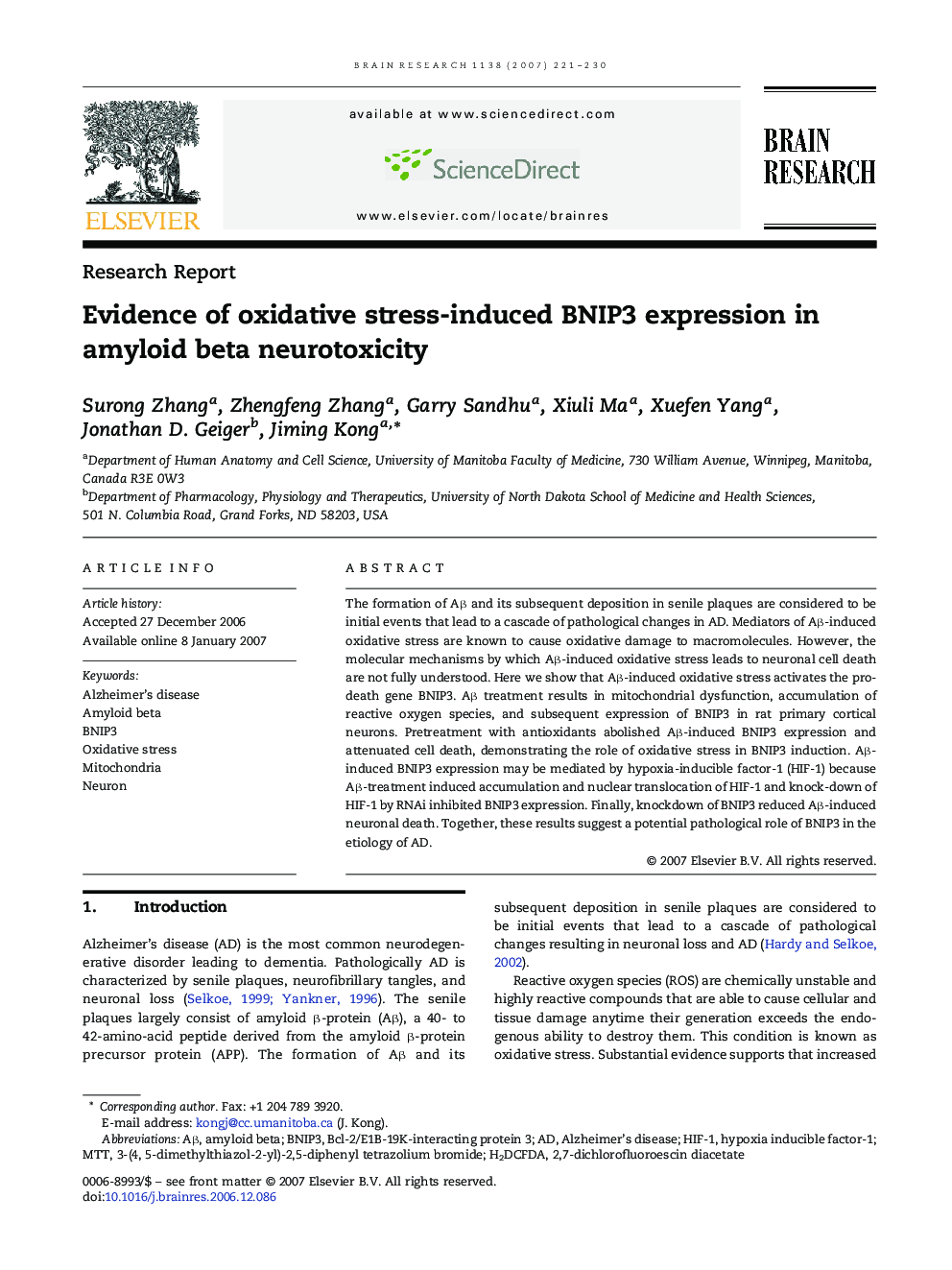| Article ID | Journal | Published Year | Pages | File Type |
|---|---|---|---|---|
| 4331460 | Brain Research | 2007 | 10 Pages |
The formation of Aβ and its subsequent deposition in senile plaques are considered to be initial events that lead to a cascade of pathological changes in AD. Mediators of Aβ-induced oxidative stress are known to cause oxidative damage to macromolecules. However, the molecular mechanisms by which Aβ-induced oxidative stress leads to neuronal cell death are not fully understood. Here we show that Aβ-induced oxidative stress activates the pro-death gene BNIP3. Aβ treatment results in mitochondrial dysfunction, accumulation of reactive oxygen species, and subsequent expression of BNIP3 in rat primary cortical neurons. Pretreatment with antioxidants abolished Aβ-induced BNIP3 expression and attenuated cell death, demonstrating the role of oxidative stress in BNIP3 induction. Aβ-induced BNIP3 expression may be mediated by hypoxia-inducible factor-1 (HIF-1) because Aβ-treatment induced accumulation and nuclear translocation of HIF-1 and knock-down of HIF-1 by RNAi inhibited BNIP3 expression. Finally, knockdown of BNIP3 reduced Aβ-induced neuronal death. Together, these results suggest a potential pathological role of BNIP3 in the etiology of AD.
